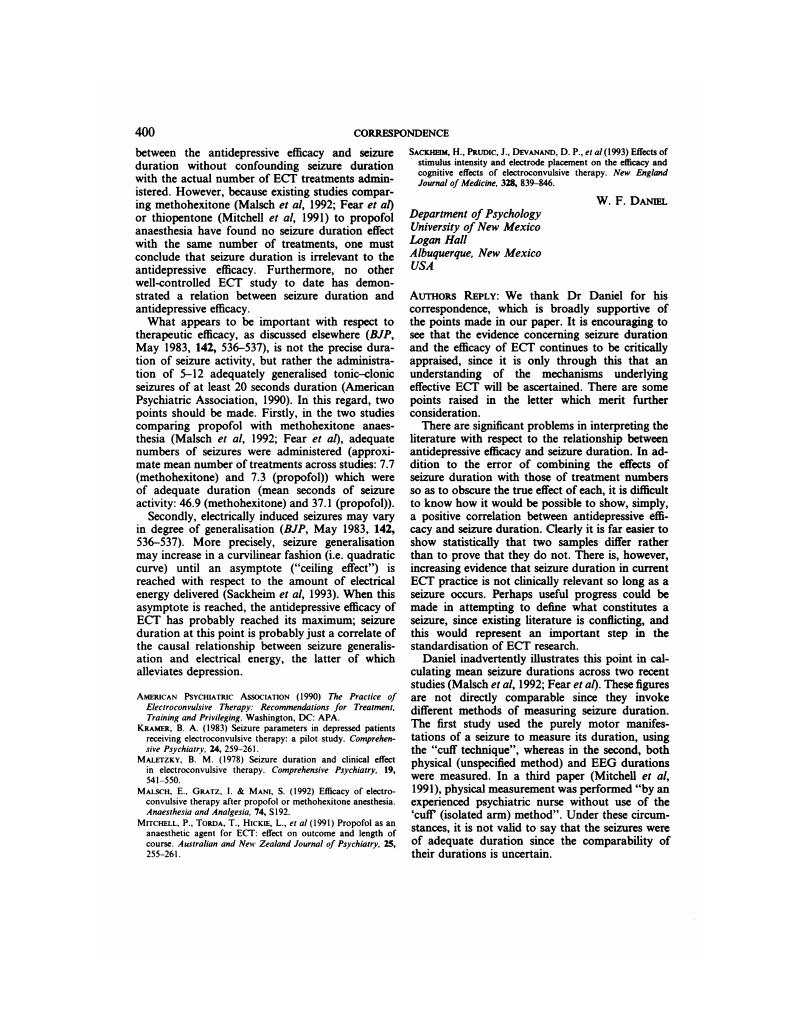No CrossRef data available.
Article contents
Authors Reply
Published online by Cambridge University Press: 02 January 2018
Abstract
An abstract is not available for this content so a preview has been provided. Please use the Get access link above for information on how to access this content.

- Type
- Columns
- Information
- Copyright
- Copyright © 1995 The Royal College of Psychiatrists
References
Fink, M. & Johnson, L. (1982) Monitoring the duration of electroconvulsive therapy seizures. Archives of General Psychiatry, 39, 1189–1191.CrossRefGoogle ScholarPubMed
Malsch, E., Gratz, I. & Mani, S. (1992) Efficacy of electroconvulsive therapy after propofol or methohexitone anesthesia. Anesthesia and Analgesia, 74, S192.Google Scholar
Mitchell, P., Torda, T., Hickie, L., et al (1991) Propofol as an anaesthetic agent for ECT: effect on outcome and length of course. Australian and New Zealand Journal of Psychiatry, 25, 255–261.Google Scholar



eLetters
No eLetters have been published for this article.